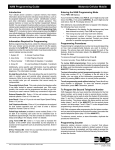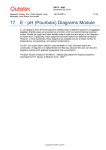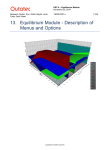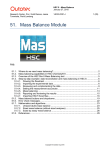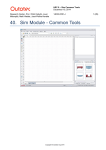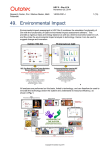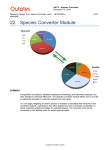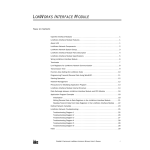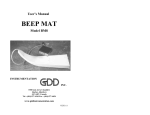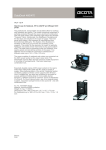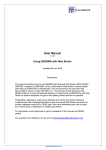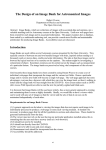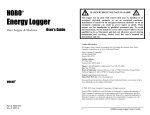Download HSC Estimates User Manual
Transcript
HSC 8 - HSC Estimates November 19, 2014 Research Center, Pori / Petri Kobylin, Antti Roine 14011-ORC-J 1 (4) 16. H, S, Cp Estimates Module Fig. 1. Estimates and HSC main database H, S, and Cp data. The HSC 8.0 database contains more than 28000 species with data on enthalpy H, entropy S, and heat capacity Cp; these data are usually based on experimental measurements. The data have been collected from more than 3000 different sources, which may contain typos and misprints. The H, S, Cp Estimates module may be used to identify and filter these errors, because it gives a rough estimate of the H, S, and Cp values based purely on chemical formula. The H, S, Cp Estimates module gives rough estimates of H, S, and Cp values for the chemical species that exist in the HSC database, and also for those that do not exist in this database. As input, it accepts almost any form of chemical formula using conventional organic or inorganic expressions. Typical entries may be: NaBO3*4H2O, H2Sn(OH)6, (C2H5)2O, Fe0.998O, etc. To improve the estimated values, the user can define whether the species is inorganic or organic. In addition, if the species is defined as organic, the user can specify more accurately the form of the species depending on which kinds of functional groups it is formed of. Copyright © Outotec Oyj 2014 HSC 8 - HSC Estimates November 19, 2014 Research Center, Pori / Petri Kobylin, Antti Roine 14011-ORC-J 2 (4) Fig. 2. Specifying additional properties for organic species (C2H4(g) in this example). It is easy to use this module. To type chemical formulae in the Species field, select Species Type if you know it and click Estimate. You can collect several results on the sheet. You can print the results using File - Print. The HSC Estimates module uses the same routine for calculating the formula weights and elemental composition as all other calculation options in HSC. Therefore you can test the correct formula formats in this option. Edit - Copy will copy the results into the clipboard. You can modify the sheet by clicking the right mouse button. Limitations: 1. 2. 3. Superscripts and subscripts are not allowed. Inner parentheses are not allowed, for example: H2(Sn(OH)6) is not a valid formula. Use H2Sn(OH)6 instead. The last parentheses are always reserved for species-type declarations, for example: As(g) Arsenic gas C Carbon O2(g) Oxygen gas C(D) Diamond Fe(l) Liquid iron FeS2 Pyrite OH(-a) Aqueous OH ion FeS2(M) Marcasite If you want to write the following formula; AlO(OH) please write it in one of the following ways: AlO2H (The last parentheses are reserved for the suffix) AlO*(OH) AlO*OH Copyright © Outotec Oyj 2014 Not valid Valid Valid Valid HSC 8 - HSC Estimates November 19, 2014 Research Center, Pori / Petri Kobylin, Antti Roine 14011-ORC-J 3 (4) Fig. 3. Information for elements for species in Fig. 1. H, S, Cp estimates are based on statistical data mining methods, which utilize stoichiometric element amounts, oxidation states, interactions, etc., which may be calculated automatically from the chemical formula. This module is quite easy to use: the user types in the formula and the program gives the formula weight, oxidation states, and H, S, and Cp estimates. Fig. 4. Enthalpy of aqueous species on the HSC main database compared to estimated data. Copyright © Outotec Oyj 2014 HSC 8 - HSC Estimates November 19, 2014 Research Center, Pori / Petri Kobylin, Antti Roine 14011-ORC-J Fig. 5. Entropy of gas species on the HSC database compared to estimated data. Copyright © Outotec Oyj 2014 4 (4)





